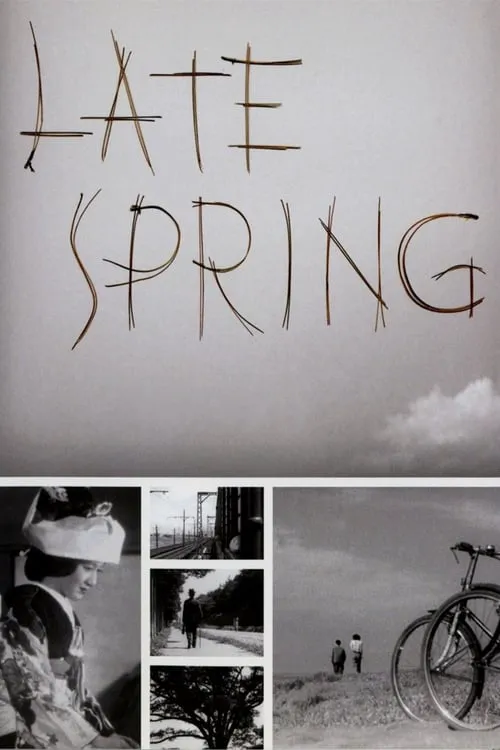Late Spring

Plot
Late Spring (1949) is a poignant and introspective Japanese film directed by Yasujirō Ozu, known for his minimalist yet profound storytelling style. Set in post-war Japan, the movie revolves around the delicate relationships between family members, exploring themes of duty, sacrifice, and the changing values of Japanese society. The story centers around Noriko, a quiet and introverted 27-year-old woman living with her widowed father, Shukichi Hirayama. Following the loss of her husband in the war, Noriko devoted herself to caring for her father, ensuring his comfort and well-being. As the years pass, Noriko grows into a mature and independent woman, finding contentment in her simple yet fulfilling life at home. However, her aunt Masa, a kind but meddling relative, sees Noriko's situation as a potential source of concern. Marriage is deeply ingrained in Japanese culture, and Masa worries that if Noriko doesn't get married soon, she will be viewed as an old maid, an undesirable prospect for any family. Masa persuades a sympathetic Shukichi to consider marriage for Noriko, rationalizing that this would be the best decision for their family reputation and Noriko's own happiness. Shukichi, caught between his desire to please Masa and his genuine love for his daughter, hesitantly agrees to explore marriage options for Noriko. However, he refuses to pressure his daughter into taking this step, aware that Noriko has grown into a strong-willed and independent individual. As family members begin to discuss potential grooms for Noriko, they reveal a disconnect between their values and Noriko's own desires. Shukichi is torn between fulfilling his family's expectations and honoring his daughter's wishes. His decision to deceive Noriko and pursue marriage without her consent is motivated by a selfless desire to protect her from the potential societal stigma associated with spinsterhood. Meanwhile, Noriko is blissfully unaware of her father's plans, continuing to live a simple and carefree life. When she finally discovers the truth, she struggles to reconcile her father's actions with his supposed love for her. Shukichi's deception forces Noriko to re-evaluate her relationship with her father and the values that govern their lives. Throughout the movie, Ozu expertly weaves together themes of duty, loyalty, and personal sacrifice. As Shukichi struggles to balance his love for Noriko with the demands of societal norms, he is forced to confront the changing values of post-war Japan. With the traditional social structure in disarray, Ozu's characters grapple with the complexities of finding new identities and roles within a rapidly evolving society. The supporting characters, particularly Shukichi's colleagues and the family's neighbor, contribute to the narrative, often providing nuanced observations on social etiquette and cultural expectations. Akihiko Hirata shines as Koji, a charming and friendly acquaintance of Noriko's who captures her affections but also represents a symbol of the changing values that have rendered traditional marriage less relevant. Ozu's cinematography masterfully evokes a sense of intimacy and tranquility, often focusing on everyday domestic scenes that reveal the inner lives of his characters. The film's deliberate pacing and sparse dialogue create a hypnotic atmosphere that immerses the viewer in the world of the Hirayamas. The resolution of Late Spring hinges on Noriko's acceptance of her situation and her father's sacrifices. As the film concludes, Noriko's quiet determination to forge her own path, unbound by societal expectations, offers a poignant commentary on the human condition. Despite the seemingly inconclusive ending, Ozu's nuanced portrayal suggests that the real hero of the story is not Noriko but her father, whose unyielding devotion to his daughter demonstrates a profound understanding of the ever-changing tides of family, love, and social responsibility.
Reviews
Recommendations




